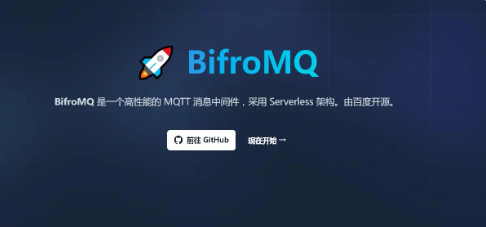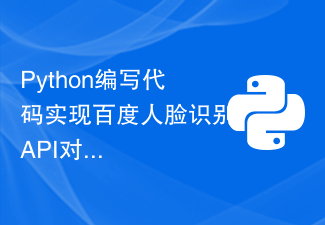 Technology peripherals
Technology peripherals AI
AI Hou Zhenyu announced that Baidu has launched a variety of AI native cloud products and is committed to reshaping large model technology in cloud computing.
Hou Zhenyu announced that Baidu has launched a variety of AI native cloud products and is committed to reshaping large model technology in cloud computing.
At the 2023 Baidu Cloud Intelligence Conference·Intelligent Computing Conference, Baidu released new products such as the AI heterogeneous computing platform "Baige 3.0", the intelligent computing network platform and the self-developed cloud native database GaiaDB 4.0 at once
Among them, Baige 3.0 has carried out comprehensive special optimization and upgrades for AI native applications and large-scale model training and inference. It supports Wanka-level ultra-large-scale AI cluster computing; compared with self-built intelligent computing infrastructure, in terms of model training and inference, the maximum throughput is increased by 30% and 60% respectively; in terms of resource utilization, Baige 3.0 can Achieving an ultra-high cluster effective training time ratio of up to 98% and an effective network bandwidth utilization rate of 95%, fully releasing the effective computing power of the cluster
In order to solve the problem of balancing the supply and demand of intelligent computing power in the AI native era, the intelligent computing network platform supports global access to intelligent computing nodes such as intelligent computing centers, supercomputing centers and edge nodes built by Baidu and third parties. By connecting dispersed and heterogeneous computing resources, a unified computing network resource pool is formed. At the same time, Baidu uses the advanced computing power scheduling algorithm independently developed by Baidu to intelligently analyze the status, performance, utilization and other indicators of various computing power resources, and conduct unified scheduling. This can effectively improve the utilization rate of intelligent computing industry resources
GaiaDB 4.0 is a cloud-native database that solves the problem of single-machine computing bottlenecks by enhancing parallel query capabilities. It implements cross-machine multi-core parallel query, improving performance by more than 10 times in mixed load and real-time analysis business scenarios
Hou Zhenyu, Vice President of Baidu Group, emphasized that in the AI native era, the infrastructure system for large models needs to be comprehensively reconstructed to lay a solid foundation for building a prosperous AI native ecosystem.
Hou Zhenyu said: "Large model reconstruction cloud computing is mainly reflected in three levels: AI native cloud will change the pattern of cloud computing, model as a service (MaaS) will become a new basic service, and AI native applications will spawn new research and development Paradigm.”
In terms of computing power, perform smarter calculations
In the cloud infrastructure layer, in the past, from Internet applications to mobile Internet applications, the bottom layer was based on CPU computing chips. However, as the demand for GPU or heterogeneous computing in artificial intelligence applications has increased significantly, the underlying computing power in the cloud market has begun to migrate towards GPU-based
In the third quarter of 2023, Nvidia’s revenue has exceeded Intel’s, and Nvidia’s latest market value has exceeded Intel’s US$1 trillion. In the future, the growth of GPU will far exceed that of CPU. Under this trend, we need to comprehensively rebuild the cloud computing infrastructure system for large models to support the implementation of AI native application systems
Specifically, the comprehensive reconstruction of cloud computing will be reflected in three areas, namely, the comprehensive upgrade of model-oriented intelligent computing infrastructure, data-oriented data infrastructure, and application-oriented cloud infrastructure, thus making computing Become smarter
At the model layer, large models are becoming more general, that is, Model as a Service (MaaS)
MaaS will significantly lower the threshold for the implementation of Al and achieve true inclusive benefits for Al. The new IT infrastructure it relies on will further subvert the existing cloud computing market structure at the bottom level.
According to the practical experience of Baidu Intelligent Cloud, in the past four months, since Wenxinyiyan was fully opened on August 31, Baidu Intelligent Cloud Qianfan large model platform (MaaS platform launched by Baidu Intelligent Cloud) has The number of daily API calls has increased 10 times. Customers mainly come from various industries such as the Internet, education, e-commerce, marketing, mobile phones, and automobiles. It can be clearly seen that in the past six months, many companies have really begun to use large models extensively
At the application layer, the way application development has completely changed
The unique capabilities of large-scale model understanding, generation, logic, and memory will lead a new paradigm in native application development, and the entire application technology stack, data flow, and business flow will undergo changes
In the past, CPU-based application development was mainly driven by business logic, while traditional artificial intelligence research and development required obtaining data for each independent scenario and training the model from scratch. Now, artificial intelligence native applications mainly rely on powerful large model capabilities and data-driven development. Enterprises can directly use scene data to fine-tune based on the basic large model, generate a dedicated large model, and use the model capabilities to design native artificial intelligence applications without retraining the large model. With the expansion of enterprise business, more competitive scenario data has been accumulated, thereby improving the effects of models and applications, forming a data-driven virtuous cycle
Specifically, the new paradigm of large-scale model-driven AI native application development shows several new changes:
First is the "new scene". The generative large language model has demonstrated beyond-expected capabilities in multiple dimensions such as understanding, generation, reasoning, and memory, bringing about the emergence of intelligence, which has given rise to many new business scenario applications that can be implemented, such as personal assistants. , intelligent copywriting creation, GBI (intelligent business analysis), coding assistant, etc.
The second is "new architecture". In the process of implementing these new scenarios, the large model has also produced many new system architectures, such as retrieval enhancement to generate RAG, intelligent agent, etc.
The third is "new development ecology". With large models as the core, some new tools have also appeared in the developer tool layer, including the orchestration tool LangChain, the AI application development tool PromptFlow, the data framework Llamalndex, etc.
Support of data and algorithms. In terms of large models, we need to build a powerful deep learning model library and provide a variety of A native application models to meet the needs of different scenarios. In terms of intelligent computing power, we need to strengthen the computing capabilities of processors and GPUs and provide efficient computing resources to support the complex computing tasks of A's native applications. In terms of data, we need to collect a large amount of A native application data, perform data mining and analysis, and provide accurate personalized services. In terms of algorithms, we need to develop advanced machine learning algorithms to improve the intelligence level of A's native applications. Only through these supports can we build a truly prosperous A native application ecosystem
The three elements of the new paradigm of AI native application development are interdependent. Large models are the core of AI native applications, and intelligent computing provides solid support for them. The new R&D paradigm helps developers efficiently develop applications based on large model capabilities. The data flywheel is a necessary condition for successful AI native applications, allowing rapid iteration of large model capabilities to continuously improve the product experience
Hou Zhenyu said: "I believe that in 2024, truly shining AI native applications will be born."
The above is the detailed content of Hou Zhenyu announced that Baidu has launched a variety of AI native cloud products and is committed to reshaping large model technology in cloud computing.. For more information, please follow other related articles on the PHP Chinese website!
 百度开源消息中间件BifroMQ,支持高性能物联网连接和消息处理Jul 15, 2023 pm 08:33 PM
百度开源消息中间件BifroMQ,支持高性能物联网连接和消息处理Jul 15, 2023 pm 08:33 PM7月14日消息,百度昨日宣布开源其旗下的MQTTBroker消息中间件BifroMQ,该消息中间件是由Java实现,具有高性能和分布式的特点。据称,BifroMQ是百度智能云物联网核心套件IoTCore的基础技术之一。BifroMQ采用了Serverless架构,并且无缝集成了原生的多租户支持。该消息中间件源自百度物联网团队多年的技术积累,旨在支持构建大规模的物联网设备连接和消息系统。据小编了解,BifroMQ采用了负载独立子集群设计,可以高效处理连接会话、消息转发和消息存储等工作负载。各子集群
 PHP实现对接百度智能分类接口的简单指南Aug 13, 2023 pm 12:13 PM
PHP实现对接百度智能分类接口的简单指南Aug 13, 2023 pm 12:13 PMPHP实现对接百度智能分类接口的简单指南近年来,随着人工智能的快速发展,智能分类技术被广泛应用于许多领域。百度智能分类接口就是其中一种应用,它可以根据传入的文本数据对其进行分类,帮助我们更好地理解文本的内容。本文将介绍如何使用PHP语言对接百度智能分类接口,并给出相应的代码示例。一、准备工作注册百度开发者账号并登录。创建一个应用并获取应用的APIKey和S
 PHP实现对接百度语音识别接口的步骤与注意事项Aug 13, 2023 pm 01:57 PM
PHP实现对接百度语音识别接口的步骤与注意事项Aug 13, 2023 pm 01:57 PMPHP实现对接百度语音识别接口的步骤与注意事项前言:随着人工智能技术的快速发展,语音识别技术也逐渐成熟并被广泛应用。百度语音识别接口是一款强大的云端语音识别服务,提供丰富的功能和灵活的配置选项,方便开发者根据自己的需求进行定制化开发。本文将利用PHP语言来实现对接百度语音识别接口的操作步骤,并对注意事项进行详细介绍。步骤一:申请百度语音识别接口首先,我们需要
 百度网盘崩溃问题已解决并致歉:现已修复,请用户尝试重新登录Aug 10, 2023 pm 02:25 PM
百度网盘崩溃问题已解决并致歉:现已修复,请用户尝试重新登录Aug 10, 2023 pm 02:25 PM据本站8月9日16时许报道,百度旗下产品出现了大规模故障,例如百度网盘在使用过程中出现了视频播放失败的情况,其他业务也有用户反映无法打开或崩溃的现象。经过本站的调查,发现是由于百度CDN服务异常所致百度网盘回应称,对此问题十分抱歉并正在紧急修复中,请耐心等待,感谢您的理解五分钟后,百度网盘回复说问题已解决,请您尝试重新登录,感谢您的支持CDN(内容分发网络)通过将源站内容分发至全球各地的加速节点,使用户在请求网站资源时能够被调度至距离最近的加速节点,从而直接获得所需内容,提高用户对网站资源的访问
 PHP如何对接百度文心一言接口?Aug 13, 2023 pm 09:27 PM
PHP如何对接百度文心一言接口?Aug 13, 2023 pm 09:27 PMPHP如何对接百度文心一言接口?百度文心一言接口是一个提供随机返回一句文心话的接口,使用起来非常简单。本文将介绍PHP如何对接百度文心一言接口,并提供代码示例。首先,我们需要申请百度文心一言接口的访问权限。在百度开放平台上创建一个应用,并获取到相应的APIKey。接下来,我们可以使用PHP中的cURL库来发送HTTP请求并获取接口返回的数据。下面是一个简单
 Python与百度智能语音接口对接的实践经验与技巧分享Aug 13, 2023 pm 12:24 PM
Python与百度智能语音接口对接的实践经验与技巧分享Aug 13, 2023 pm 12:24 PMPython与百度智能语音接口对接的实践经验与技巧分享一、引言百度智能语音接口是一种强大的语音识别技术,可以将语音转化为对应的文字,并且支持多种场景下的语音输入,如麦克风输入、文件输入等。在实际开发中,与百度智能语音接口进行对接可以帮助我们实现语音识别、语音转写等功能。本文将分享一些Python与百度智能语音接口对接的实践经验与技巧,并提供代码示例供参考。二
 使用Python实现百度图像识别API对接教程Aug 12, 2023 pm 07:58 PM
使用Python实现百度图像识别API对接教程Aug 12, 2023 pm 07:58 PM使用Python实现百度图像识别API对接教程一、介绍随着人工智能的发展,图像识别技术已广泛应用于各个领域。而百度图像识别API是一款强大而易用的图像识别工具,可以帮助开发者快速实现图像分类、物体检测、图像搜索等功能。本文将详细介绍如何使用Python语言对接百度图像识别API,并给出代码示例。二、准备工作注册百度云账号首先,你需要在百度云官网注册一个账号,
 Python编写代码实现百度人脸识别API对接,实现人脸特征分析Aug 27, 2023 am 11:01 AM
Python编写代码实现百度人脸识别API对接,实现人脸特征分析Aug 27, 2023 am 11:01 AMPython编写代码实现百度人脸识别API对接,实现人脸特征分析人脸识别技术近年来快速发展,广泛应用于安全监控、用户认证、人脸搜索等领域。百度人脸识别API是一种强大的工具,提供了丰富的人脸特征分析功能。本文将介绍如何使用Python编写代码,通过对接百度人脸识别API实现人脸特征分析。首先,我们需要准备好Python开发环境。建议使用Python3.x版


Hot AI Tools

Undresser.AI Undress
AI-powered app for creating realistic nude photos

AI Clothes Remover
Online AI tool for removing clothes from photos.

Undress AI Tool
Undress images for free

Clothoff.io
AI clothes remover

AI Hentai Generator
Generate AI Hentai for free.

Hot Article

Hot Tools

PhpStorm Mac version
The latest (2018.2.1) professional PHP integrated development tool

VSCode Windows 64-bit Download
A free and powerful IDE editor launched by Microsoft

WebStorm Mac version
Useful JavaScript development tools

Dreamweaver CS6
Visual web development tools

SublimeText3 Mac version
God-level code editing software (SublimeText3)





